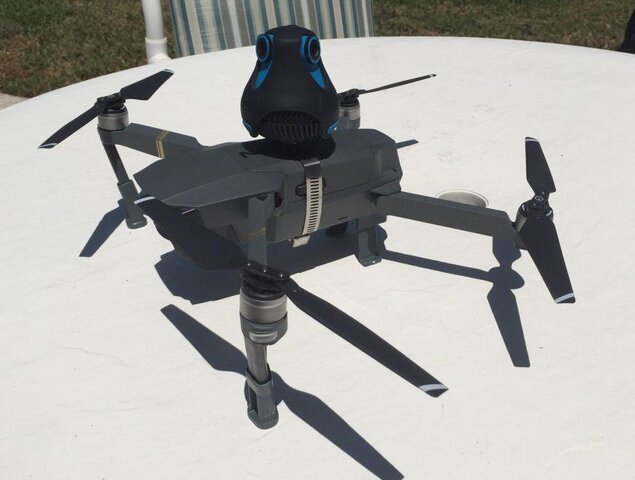I'm intrigued by 3D largely because it seems that I can no longer have it.
Who told you you aren't allowed to have it? I'm not stopping you. Maybe because the salesman at Best Buy won't sell it to you, should not stop you, unless you refuse to buy from anyone else. Like I said, I needed a monitor that was a passive 3D 27" for my edit bay and it was not available anywhere in the US, so I just ordered it from Alibaba, an LG.
What did bother me is that the industry standards capped the 3D at 1920x1080 for flat screens and projectors. But, now we are seeing the 360VR cameras coming out with 4K per eye technology and goggles with 4K screens that can display 3D in split optical format.
Here is a screen capture from my iphone6+ as displaying a 4K 3D 360VR window of view in Goggles format. Since the equirectangular image is 4K pixels wide by 4K pixels tall for stereo3D but you are only viewing a window of those 4K pixels at a time in goggles view. The true equirectangular flat image is 4Kx2K per eye and it looks more like a squished and curved panorama image.

The image processing of a 3D 360VR 4K equirectangular video at 30p is why the computer to deal with all that data has to be quite powerful. But when viewing a portion of those pixels at any one time, is why the image in view will lack the detail of a true 4K and actually, not even HD quality. The limiting factor is at both ends. The camera needs to shoot at some multiple of 4K and the goggles need to display at the same multible or the flat version image when viewed in VR window will look more like an old VHS tape than even HD. The best 360 cameras today will have like 16 4K cameras in a sphere shooting in all directions. But that image while it may be at 50K pixels in equirectangular, the goggles to display it will still limit the viewing resolution. In otherwords, 360VR is a long way off to becoming equal quality to HD. It's more like VHS quality when using goggles with a 2K iphone 6+ screen as seen in this image.
But, just because the image quality is not there, yet, that doesn't stop me from having fun with the format. Like when I pioneered underwater cave video, I was one of 4 people in the world to do that in the early 80's. I shot with a VHSC camcorder.




